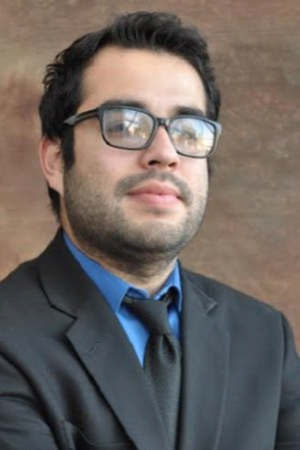Contact AZTrans
Graduate and Undergraduate Internships
NAU undergraduate internship opportunities for students involved with AZTrans
Northern Arizona University’s Department of Civil Engineering, Construction Management, and Environmental Engineering offers internships to students looking to pursue careers in transportation engineering.
Internship activities
During 2019, PSR9 Interns worked on the following projects/papers:
Examination of Factors Affecting Injury Severity in Crashes Occurring on Interstate Freeways by Vehicle Type: Analysis of the Arizona Megaregion
According to the Arizona Department of Transportation (ADOT), the annual number of traffic crash fatalities has generally been increasing in recent years in the state of Arizona. With a continuously growing population and consequently more vehicles on the road, it is imperative to identify and analyze factors that affect injury severity when crashes occur, particularly those occurring on high-speed freeways. To examine this issue, this study utilized Arizona crash data for the years 2010 through 2017 to analyze factors affecting the injury severity of persons involved in crashes on occurring on interstate freeways in the Arizona megaregion. This is accomplished through estimation of random parameters ordered logit models to investigate the effect of several person, vehicle, crash, roadway, traffic, and environmental variables on the injury severity of crash-involved persons. Since crash characteristics may vary significantly depending on types of vehicles involved, separate models were estimated for crashes involving only passenger vehicles, crashes involving freight vehicles (e.g. large trucks), and crashes involving motorcycles. Several variables including crash type, roadway geometry characteristics, and person-related variables, among several others, were found to be significantly associated with injury outcomes, and those variables and their effects varied by vehicle type involvement. The findings presented in this study provide insights which can be used to assist in developing and planning countermeasures aimed at improving freeway transportation safety.
An Exploratory Parameter Sensitivity Analysis of Bicycle-Vehicle Conflicts Using the Surrogate Safety Assessment Model
The use of traffic microsimulation software has been an invaluable tool for analysis of operational performance at signalized intersections in recent decades. Microsimulation also offers opportunities to examine the safety performance of an intersection through analysis of surrogate measures of safety such as conflicts identified using post encroachment time (PET) or time to collision (TTC). The use of microsimulation and surrogate measures of safety provides a very promising avenue for analysis of the safety impacts of treatments aimed at improving bicyclist safety, particularly for new and/or developing treatments given the absence of police-reported crash data. However, the use of these tools for the analysis of bicycle-vehicle conflicts is lacking. To fill this gap, the following to objectives were addressed in this study: 1) perform a sensitivity analysis on the impacts of behavioral parameters in microsimulation on the frequency and severity of bicycle-vehicle conflict outputs from Surrogate Safety Assessment Model (SSAM) at a signalized intersection, and 2) perform a qualitative analysis on the ability of microsimulation to emulate realistic interactions between motor vehicles and bicycles. The results indicated that some behavioral parameters had no effect on conflict outputs, while some did have effects with varying consistency and magnitude. The qualitative analysis revealed instances of unrealistic interactions between bicycles and vehicles, and further refinement of these models is needed. Ultimately, this study adds to the literature by providing an exploratory step forward in fine-tuning the use of microsimulation/SSAM to analyze bicycle-vehicle conflicts.
Impact of Evolving Course Operational Changes on Student Outcomes in Transportation Engineering
There are many challenges faced by instructors delivering in-person content on a university level. Academic integrity problems, increasing class sizes in times of university budget austerity, and the need to keep course content current are just a few of these challenges that must be addressed to ensure student comprehension of course materials and a positive classroom experience. While assessments within the course provide the instructor with immediate feedback regarding student performance in a given semester, student surveys are a tool generally used to assess the efficacy of delivery, content, and course methods, as well as instructor performance. This paper builds upon established methods to profile the impact of changes made to a transportation engineering course on student’s perceptions of their retention of material as well as their perception of the usefulness and effectiveness of various assessment instruments. Survey results are augmented with assessment data to provide unique insights into the impact of changes in course methods and delivery over a three-and-a-half- year period. The results of this analysis are useful as they identify issues that a lead instructor may need to mitigate regarding instructional staff, specifically limited experience in lab instructors and time availability for lab aides, as well as corroborate some of what we already know regarding items that produce a successful student. In addition, the specific comparisons of student satisfaction in grading consistency and student retention of lab material may be useful when negotiating for resources in a constantly tightening higher education budget landscape.
Current UTC interns

Emmanuel James Accordion Closed
Emmanuel James is an undergraduate student studying Civil Engineering at Northern Arizona University. Mr. James will be graduating in May 2019. He is the 2018-2019 Vice-President of the NAU Institute of Transportation Engineers student chapter and a member of the American Society of Civil Engineers. He is heavily involved in either of these organizations by competing, presenting, and attending several conferences. For 2 years Mr. James has been undergraduate research assistant and during that time has been involved with several research topics investigating crash frequency and severity analyses, and pedestrian violations. He recently submitted a paper investigating severity of crashes on Tribal Lands in Arizona using binary logistic regressions models that factor in several characteristics to the Transportation Research Board Annual Meeting in 2019, as a TRB Minority Student Fellow representing NAU. He also is a friend of the TRB Standing Committee ABE80: Native American Transportation Issues.

David Lemcke Accordion Closed
David Lemcke is an undergraduate Civil Engineering student at Northern Arizona University. Mr. Lemcke is a member of the NAU Institute of Transportation Engineers student chapter and he will be graduating in May 2021. ITE has been an important part of Mr. Lemcke’s college experience because the conferences and events provided by the institute fostered a strong interest in transportation engineering as a career path. Since spring 2019 he has been an undergraduate research assistant studying smart cities and the microscopic traffic simulation software VISSIM. Mr. Lemcke also is involved in using student course evaluations from the CENE 420 class to assess classroom performance.
Past UTC Interns

Cristopher Aguilar Accordion Closed
<
Graduate research assistant, Department of Civil Engineering, Construction Management, and Environmental Engineering, Northern Arizona University.
Mr. Cristopher Aguilar is a Graduate Research Assistant in the Department of Civil Engineering, Construction Management, and Environmental Engineering at Northern Arizona University (NAU), where he also earned his bachelor’s degree in Civil Engineering in May 2017. Mr. Aguilar has a year of research experience where he has worked with analyzing video data for bicycle and pedestrian studies. During his time as an undergraduate research assistant, he worked on a bicycle conflict project looking at video data to determine whether a leading bicycle interval would be effective in reducing near miss collisions and offer any safety consideration at different sites in New York City, and Portland Oregon. In addition, he worked in analyzing video data to determine if any distracted pedestrian behavior affected walking speed at several sites in Flagstaff, Arizona and New York City. His current research involves using ArcGIS to look at crash data in the Arizona Mega-region. The crash data will then be used to determine factors affecting the crash frequency and severity along the major interstates. In addition, Cristopher is also incorporating weather prediction data into his crash frequency models. Cristopher is actively involved in the Institute of Transportation Engineer chapter, where serves as the club president during the 2018-2019 academic year. Other transportation experience includes working as the Traffic Studies and Signal class lab aide for a year and a half where he got familiar with MUTCD standards, traffic controller usage, and basic traffic studies. In addition, through transportation related classes he has gotten familiar with traffic safety concepts and models, and the microsimulation software VISSIM. During this last academic year 2017-2018, Cristopher was listed as a co-author on TRB paper 18-03541 Titled: Pedestrian Behavior at Signalized Intersection Crosswalks: An Observational Study of Factors Associated with Distracted Walking, Pedestrian Violations, and Walking Speed and on TRB paper 18-05800 Titled: Building Intelligence in the Automated Traffic Signal Performance Measures with Advanced Data Analytics. In addition, to the publications both papers held a poster session during the 2018 Annual TRB meeting. For the 2019 TRB meeting Cristopher co- wrote a paper titled Analysis of Factors Affecting the Frequency of Crashes on Interstate Freeways by Vehicle Type and Severity Incorporating Weather Prediction Models, pending review.

Shiqing Cai Accordion Closed
Shiqing Cai is a senior at Northern Arizona University where she is majoring in Environmental Engineering. Ms. Cai is a member of the American Society of Civil Engineers. She has worked in the analysis of wastewater treatment plant data and evaluation of a municipal anaerobic sludge digestion model. During the 2019-2020 academic year, she is an undergraduate research assistant. She uses ArcGIS to create a regression-based particulate matter model based on socioeconomic indicators in recent research.

Fan Yu Accordion Closed
Fan Yu is a M.Sc. student of Civil Engineering at Northern Arizona University. Mr. Yu is currently working on his graduate project, investigating correlations between PM10 emissions from vehicles with measured meteorology variables using ArcGIS. His goal is to develop a spatial regression-based model for UTC (Pacific Southwest Region 9) megacities such as Los Angeles, CA and Phoenix, AZ. Mr. Yu is expected to graduate in May 2020. He recently received his B.Sc. from Northern Arizona University in 2019. As an undergraduate research assistant, he acquired two years research experience developing dust storm models aimed at improving highway safety. He is accomplished in the use of multiple software including Weather Research and Forecasting model (WRF), the Linux operating system, ArcGIS and other advanced packages. The final result of his undergraduate research was presented at TRB 2019, and has been selected for publication in the Transportation Research Record. As the recipient of the Craig Roberts Graduate Student Fellowship, Mr. Yu has attended several activities and conferences in the field of transportation. These include the ITE Western District’s annual meeting, ACEC conference on Arizona roads and streets, and the 2019 AZ ITE-IMSA Conference.